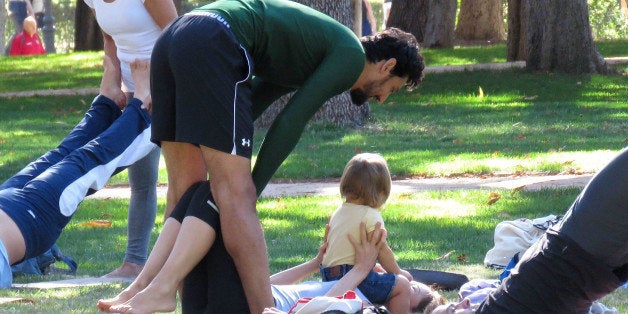
We all love yoga for its therapeutic effects, yet you may not know that yoga makes great family therapy. Integrating yoga as a quality inter-relational activity builds communication, supportive relationships, fosters the expression of love, and structures healthy bonds and boundaries.
Parents, caretakers, and teachers face a myriad of modern complexities in child-development, yet there are many commonalities:
Emotional/behavioral issues. Violence/bullying/sexting. Transitional difficulties in divorce. Anger. Distant and unreachable. Inability to focus. Lack of energy and exercise. Nervous system 'ticks" from overload of electronic devices. Difficulty getting kids to eat healthy. Inability to reach satiation.
Frustrations can arise seemingly out of nowhere. So what is the hidden message in the emotional stress, and how do we get to a resolution?
Being that yoga calms the mind and opens the nervous system, it helps us to access our truth within, and allows us to articulate the things that cause emotional stress. However, in order for kids and families to be willing to share what arises without inhibition, we need to create a safe space to explore psychological and emotional sensitivities. Then we can speak freely without fear of blame, judgment, or denial. This grounded effect assists the process to better understand the emotions, root causes, and reactions, and help us work towards transforming the situation and turning reactions into healthy responses.
Here are suggestions on how to address and resolve emotion:
1.Breathe-In through the nose and breath-out through the mouth.
This is the best technique to let go of frustration! One can feel the stress fall off from them in just one breath, and breath-by-breath. Kids notice an immediate change in their state of being from just one deep breathe and "letting go" exhale. Remind students and children to take one breath in through the nose and out of the mouth, followed by 3 breaths in a row. Count the breaths. Talk them through it and breath with them.
2.Come from an open and compassionate heart when addressing the emotion, and be ready to listen (really listen!). Be ready to hear the truth. Be ready to accept your role in the situation. Be ready to be soft.
3.Get on the floor or yoga mat with the child. It makes them feel you are on their level.
4.You can also weave together talk therapy with movement therapy/yoga therapy. Older kids often respond well from more insight through vocal feedback and information.
5.You can begin a Yoga session by addressing any emotional issues (but without judgment or emotional charge), and then lead child/student through the yoga practice or physical therapy lesson to move the stress out of the body.
6.The time following yoga is a great opportunity to open conversations and transform relationships. It can be useful to have a mediator/teacher allow each person to express his or her inner emotions and to feel properly heard. When kids feel supported and protected they are much more willing to share. Trying to understand the true meaning behind the child/teen/parent aggravation is sometimes enough to open the door to a deeper and transformative conversation.
7.Always resolve! Once everyone is heard, set the tone for change. What can each parent, child, teacher, or caregiver do to personally make the situation better? Make sure everyone understands the situation, and agrees to work towards being their best self. To heal is the gift.
Adults often feel the need to exercise and practice yoga to reduce stress and simply function in the world. Definitely take the time for self-practice; however make sure to set aside time for family yoga. Above all, address and resolve emotional stigma. If you practice yoga with your family, students, and friends, you will find it is easier to communicate and you will deepen relationships and ultimately make it easier to deal with the hard stuff. It's best to build this bond of trust in the early stages. With the door of communication open, we can become a child's confidant, ally, protector, and trusted guide.
I'll leave you with these two SUCCESS concepts that I adore:
•Success can be measured in the number of difficult conversations you're willing to have.
•Happiness is the highest level of success.
Namaste~